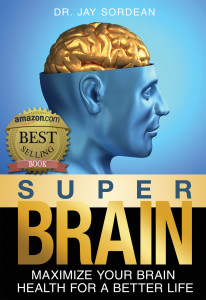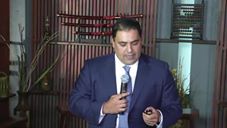ALS and Neurologic Relief Center Technique — A new Approach
ALS is short for amyotrophic lateral sclerosis, also known as Lou Gehrig’s disease, named after the famous athlete. This debilitating disease causes the nerves to the muscles to atrophy, thus the muscles atrophy. Dr. Jay has worked with several patients with ALS but that was before he started using NRCT. Now there is some anecdotal evidence that ALS might respond to NRCT in combination with other functional medicine approachs that Dr. Jay uses at The Redwood Clinic for the functional medicine patients.
Read this story from another NRCT clinic. Then call The Redwood Clinic should it sound familiar.
NRCT Results with an ALS patient
Note: While this is a testimonial from the office of another practitioner, Dr. Kevin Saiz, the methods used are the same as I use in my office but without using the NRCT chiropractic adjustment, rather the vector process. I am excited that we are doing so much to help so many people, even those with ALS.
“ Hello, my name is Megan and I am 36 years old. I’m writing to share my experience with the NRC Technique thus far. My situation is unique because I have ALS. I was diagnosed in October 2015. My symptoms started about two and half years ago when my right hand seemed to just stop working. I had carpel tunnel surgery, cubital tunnel surgery, and later radial tunnel surgery. These procedures helped but I never regained function like I should have. Shortly after the last surgery my left hand started to weaken as well. This time I requested the surgeon have a different neurologist evaluate me. It was during the next EMG by a new and more competent neurologist that it became clear there was something more seriously wrong with me. After several more EMGs, a complete physical examination by yet another neurologist, a muscle biopsy, and bloodwork to exclude alternate causes, I received the diagnosis of ALS. This diagnosis was confirmed by the Professor of Neurology at Baylor College of Medicine seven days later. Of course, I was told no real treatments exist.
Hello, my name is Megan and I am 36 years old. I’m writing to share my experience with the NRC Technique thus far. My situation is unique because I have ALS. I was diagnosed in October 2015. My symptoms started about two and half years ago when my right hand seemed to just stop working. I had carpel tunnel surgery, cubital tunnel surgery, and later radial tunnel surgery. These procedures helped but I never regained function like I should have. Shortly after the last surgery my left hand started to weaken as well. This time I requested the surgeon have a different neurologist evaluate me. It was during the next EMG by a new and more competent neurologist that it became clear there was something more seriously wrong with me. After several more EMGs, a complete physical examination by yet another neurologist, a muscle biopsy, and bloodwork to exclude alternate causes, I received the diagnosis of ALS. This diagnosis was confirmed by the Professor of Neurology at Baylor College of Medicine seven days later. Of course, I was told no real treatments exist.
When I came to see Dr. Saiz a few weeks ago it was not for ALS but for a painful shoulder. He immediately started to tell me about the NRC Technique he had learned and how he would like to try it on me. I figured I had nothing to lose so we got started on the test. I don’t recall anything remarkable happening during the test but when it was over I was able to move my right arm about four inches further behind my back that I could when I walked in the door. I also had an unexplainable ear to ear grin. That was enough to get me interested.
A couple days later, he performed the first adjustment. My feet flew about a foot up off of the exam table! I have had plenty of chiropractic adjustments and this has never ever happened before. When I left that day my right bicep was tingling with a pins-and¬needles feeling for about five minutes. A few times this sensation darted down to my right thumb (which is mainJy decorative at this point). But the really interesting thing occurred that evening. When I went to get out of the bathtub that night, I got my feet under me and … I stood up! This is significant because I have not been able to get up from a squat for 6 to 9 months. My newfound ability didn’t last long. I think it was gone by the next day. However, by the end of that week’s adjustments I was able to stand up from a squatting position for about three days following the last adjustment.
I am now eight adjustments into this process. The ability to get up from a squat is my most obvious marker of improvement. I am trying to find other functions/movements and evaluate if they are improving as well. Yesterday, I thought to see if I could stand on one leg. I could! I can balance on the other leg as well. For many months now, whenever I’m getting dressed I have made sure to lean against the bed because my balance was not predictable. I have also noticed that my walking, my gait, is more natural after a NRCT adjustment. Before the adjustments, I could still walk but it always felt awkward. Each step didn’t feel strong and sometimes it felt like my feet were flapping when they hit the ground. I had to ‘think’ about walking. Yesterday, however, I walked about three-quarter of a mile with my family and then showed off to my neighbor how I could balance on each leg!
To be completely honest, I have also been seeing a naturopathic doctor who ‘prescribed’ dietary changes and homeopathic remedies. While these changes greatly improved my energy and sense of well-being, they were not having any effect on my function. In fact, my function seemed to be very slowly slipping. But it is pretty hard to argue with the clear results that I have received from the NRCT adjustments. I’m very hopeful to see what else will come as I continue these treatments. Will these adjustments work for other ALS patients? Who knows … ? But it would be nice to find out.
Sincerely,
Megan M.”


